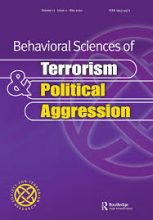Extreme militant groups use their media campaigns to share information, recruit and radicalize followers, share worldviews, and seek public diplomacy ends. While previous research documents that various on-the-ground events correspond to changes in the groups’ messaging strategies, studies of how competing militant groups influence one another’s media campaigns are nascent. This study helps fill that gap by examining how successful attacks by one militant group correspond to changes in both the perpetrating and competing groups’ visual media messaging strategies. It examines attack success through the lens of violent acts that result in direct impact (measured through death counts) and indirect impact (measured through traditional media coverage levels). The study utilizes a content analysis of 1882 authority-related images in AQAP’s al-Masra newsletter and ISIS’s al-Naba’ newsletter appearing three issues before and after each attack, and a chi-square analysis comparing four ISIS attack conditions (high death/high media, high death/low media, low death/high media, and low death/low media). The findings show that a high number of resulting deaths, rather than a high level of media coverage, correspond to changes in the media campaigns of both the perpetrators and the competing groups, with key differences in visual content based on group identity.
